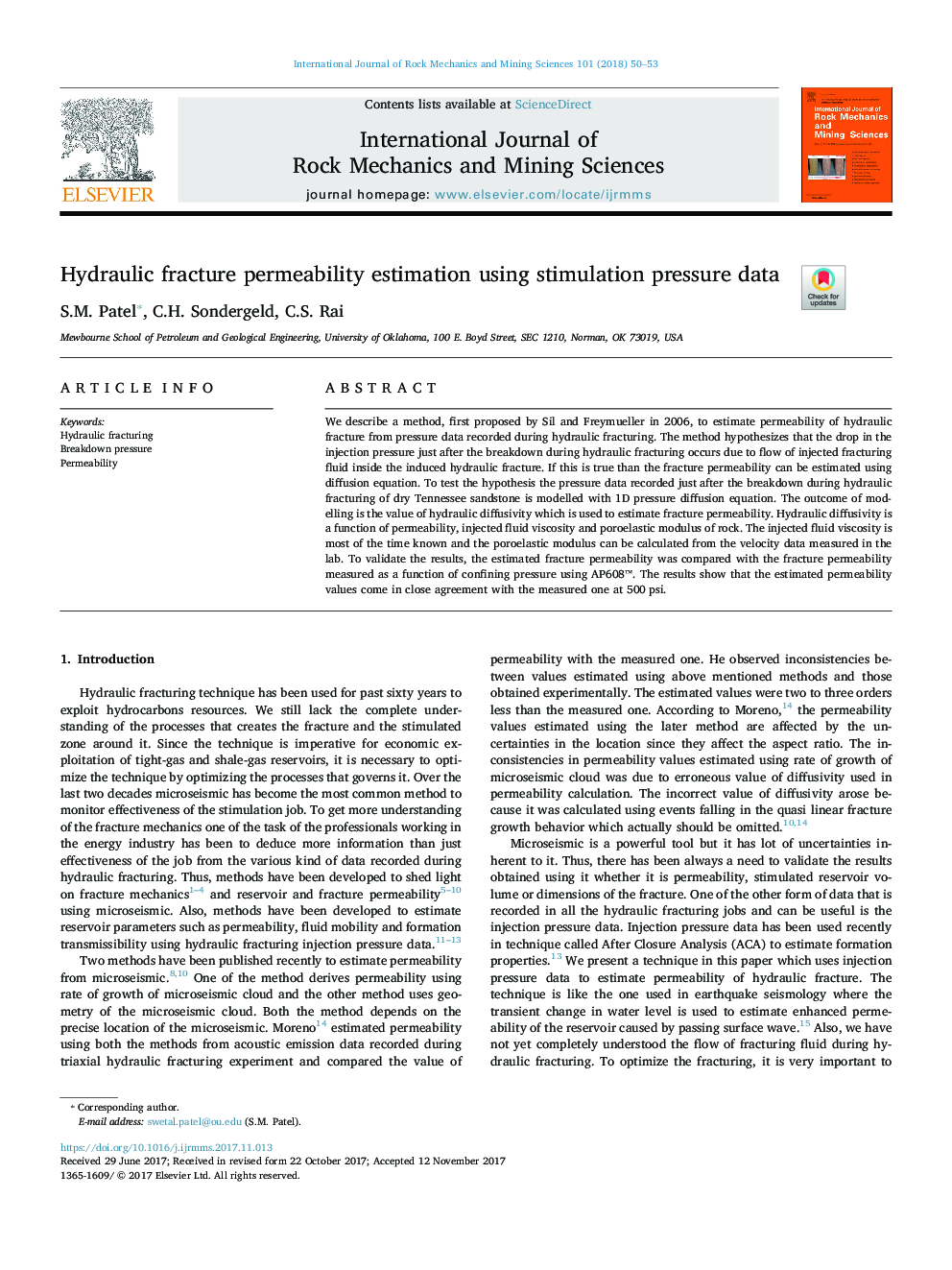| Article ID | Journal | Published Year | Pages | File Type |
|---|---|---|---|---|
| 7206388 | International Journal of Rock Mechanics and Mining Sciences | 2018 | 4 Pages |
Abstract
We describe a method, first proposed by Sil and Freymueller in 2006, to estimate permeability of hydraulic fracture from pressure data recorded during hydraulic fracturing. The method hypothesizes that the drop in the injection pressure just after the breakdown during hydraulic fracturing occurs due to flow of injected fracturing fluid inside the induced hydraulic fracture. If this is true than the fracture permeability can be estimated using diffusion equation. To test the hypothesis the pressure data recorded just after the breakdown during hydraulic fracturing of dry Tennessee sandstone is modelled with 1D pressure diffusion equation. The outcome of modelling is the value of hydraulic diffusivity which is used to estimate fracture permeability. Hydraulic diffusivity is a function of permeability, injected fluid viscosity and poroelastic modulus of rock. The injected fluid viscosity is most of the time known and the poroelastic modulus can be calculated from the velocity data measured in the lab. To validate the results, the estimated fracture permeability was compared with the fracture permeability measured as a function of confining pressure using AP608â¢. The results show that the estimated permeability values come in close agreement with the measured one at 500 psi.
Related Topics
Physical Sciences and Engineering
Earth and Planetary Sciences
Geotechnical Engineering and Engineering Geology
Authors
S.M. Patel, C.H. Sondergeld, C.S. Rai,
